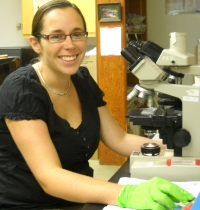
EMMA WEEKS. Assistant Research Scientist. Prior to joining UF, Emma was based in the UK at the London School of Hygiene and Tropical Medicine, from which she graduated with a PhD in Medical Entomology in June 2011. Emma’s main interests are in the behavior and chemical ecology of insects of medical and veterinary importance. During her PhD, Emma used laboratory-based behavioural experiments, coupled gas chromatography-electroantennography and analytical chemistry (including GC and GC-mass spectrometry) to give a better understanding of bed bug semiochemicals and how they could be exploited for control. Prior to and during Emma’s PhD she assisted with the chemical ecology studies of a variety of medically important insects including tsetse flies, mosquitoes, triatomine bugs and culicoides midges. At UF Emma has joined the veterinary entomology group where she is going to be involved in the study of ticks, sandflies, and other arthropods. Initially Emma is going to work on the brown dog tick, Rhipicephalus sanguineus. The brown dog tick is a common pest of dogs that frequently infests domestic properties in the southeastern and gulf states and is a competent vector of the pathogens that cause canine erlichiosis and babesiosis. Emma will use her knowledge of insect behavior and chemical ecology as well as her experience with pests that live in such close association with humans to develop novel methods of monitoring and control.